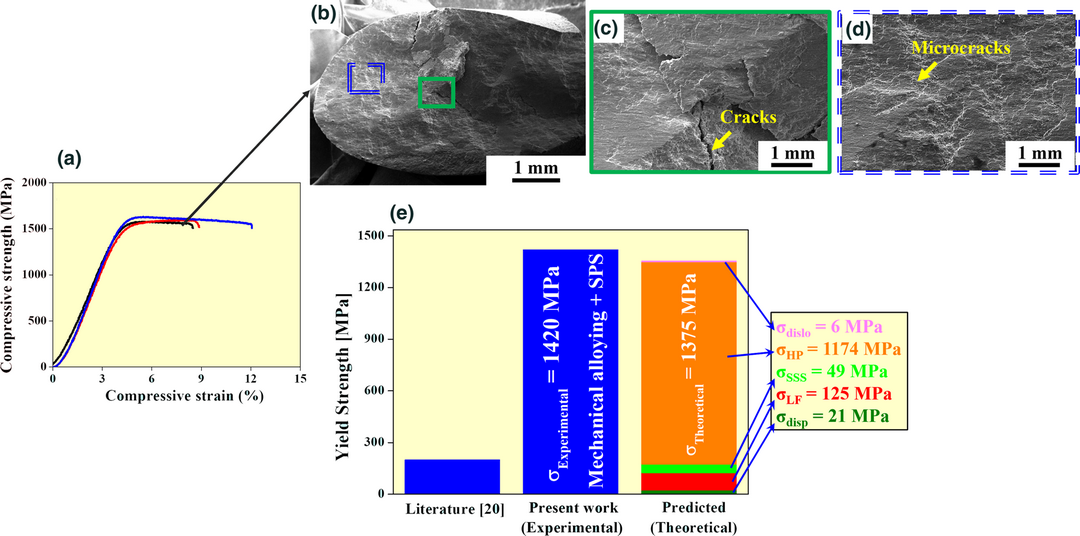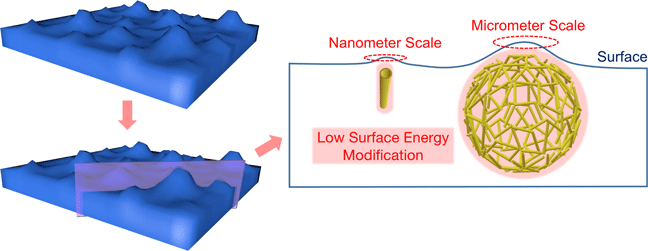Novel Synthesis and Processing of Materials
Invited Feature Paper
Powder metallurgy of Al0.1CoCrFeNi high-entropy alloy
-
- Published online by Cambridge University Press:
- 05 October 2020, pp. 2835-2847
-
- Article
- Export citation
Article
Microstructure and mechanical property of Cu/In–45Cu/Ni solder joints formed by transient liquid phase bonding
-
- Published online by Cambridge University Press:
- 13 August 2020, pp. 2848-2858
-
- Article
- Export citation
Design of porous aluminum oxide ceramics using magnetic field-assisted freeze-casting
-
- Published online by Cambridge University Press:
- 06 August 2020, pp. 2859-2869
-
- Article
- Export citation
Governing role of the ratio of large platelet particles to ultrafine particles on dynamic and quasistatic compressive response and damage evolution in ice-templated alumina ceramics
-
- Published online by Cambridge University Press:
- 20 October 2020, pp. 2870-2886
-
- Article
- Export citation
Fabrication of anti-icing surface with halloysite spherical microcapsule
-
- Published online by Cambridge University Press:
- 13 October 2020, pp. 2887-2896
-
- Article
- Export citation
Organic and Hybrid Functional Materials
Invited Paper
Contact formation of C60 to thin films of formamidinium tin iodide
-
- Published online by Cambridge University Press:
- 25 September 2020, pp. 2897-2904
-
- Article
- Export citation
Article
Blend-based fibers produced via centrifugal spinning and electrospinning processes: Physical and rheological properties
-
- Published online by Cambridge University Press:
- 11 August 2020, pp. 2905-2916
-
- Article
- Export citation
Influence of material and process parameters in the dry-development of positive-tone, polyaldehyde photoresist
-
- Published online by Cambridge University Press:
- 10 September 2020, pp. 2917-2924
-
- Article
- Export citation
Preparation of superhydrophobic magnetic stearic acid polyurethane sponge for oil–water separation
-
- Published online by Cambridge University Press:
- 07 October 2020, pp. 2925-2935
-
- Article
- Export citation
Synthesis of the chiral stationary phase based on functionalized ZIF-8 with amylose carbamate
-
- Published online by Cambridge University Press:
- 19 October 2020, pp. 2936-2949
-
- Article
- Export citation
Energy Conversion and Storage Materials
Invited Feature Paper
Energy conversion systems: Molecular architecture engineering of metal precursors and their applications to vapor phase and solution routes
-
- Published online by Cambridge University Press:
- 21 September 2020, pp. 2950-2966
-
- Article
- Export citation
Article
Improving photovoltaic performance of benzothiadiazole-based small molecules: A synergistic effect of non-covalent interaction and aryl terminal group
-
- Published online by Cambridge University Press:
- 21 September 2020, pp. 2967-2975
-
- Article
- Export citation
Large effect of structural variations in the columnar silicon electrode on energy storage capacity and electrode structural integrity in Li-ion cells
-
- Published online by Cambridge University Press:
- 07 October 2020, pp. 2976-2988
-
- Article
- Export citation
In situ graphitized hard carbon xerogel: A promising high-performance anode material for Li-ion batteries
-
- Published online by Cambridge University Press:
- 13 November 2020, pp. 2989-3003
-
- Article
- Export citation
Electronic, Photonic and Magnetic Materials
Article
Thermal annealing influence on structural, magnetic, electronic, and mechanical properties of off-stoichiometric Ni40Cu10Mn35Ti15 all-d-metal Heusler alloy
-
- Published online by Cambridge University Press:
- 20 August 2020, pp. 3004-3011
-
- Article
- Export citation
Nanostructure morphology influences in electrical properties of titanium dioxide thin films
-
- Published online by Cambridge University Press:
- 26 August 2020, pp. 3012-3020
-
- Article
- Export citation
Study on the band gap optimization and defect state of two-dimensional honeycomb phononic crystals
-
- Published online by Cambridge University Press:
- 10 September 2020, pp. 3021-3030
-
- Article
- Export citation
Front Cover (OFC, IFC) and matter
JMR volume 35 issue 21 Cover and Front matter
-
- Published online by Cambridge University Press:
- 13 November 2020, pp. f1-f5
-
- Article
-
- You have access
- Export citation
Back Cover (IBC, OBC) and matter
JMR volume 35 issue 21 Cover and Back matter
-
- Published online by Cambridge University Press:
- 13 November 2020, pp. b1-b2
-
- Article
-
- You have access
- Export citation


















